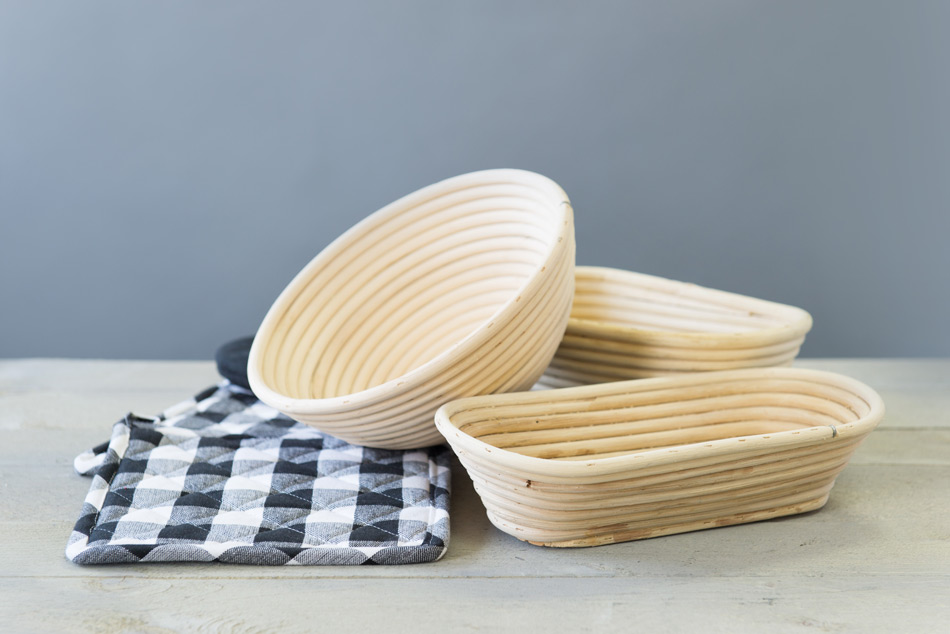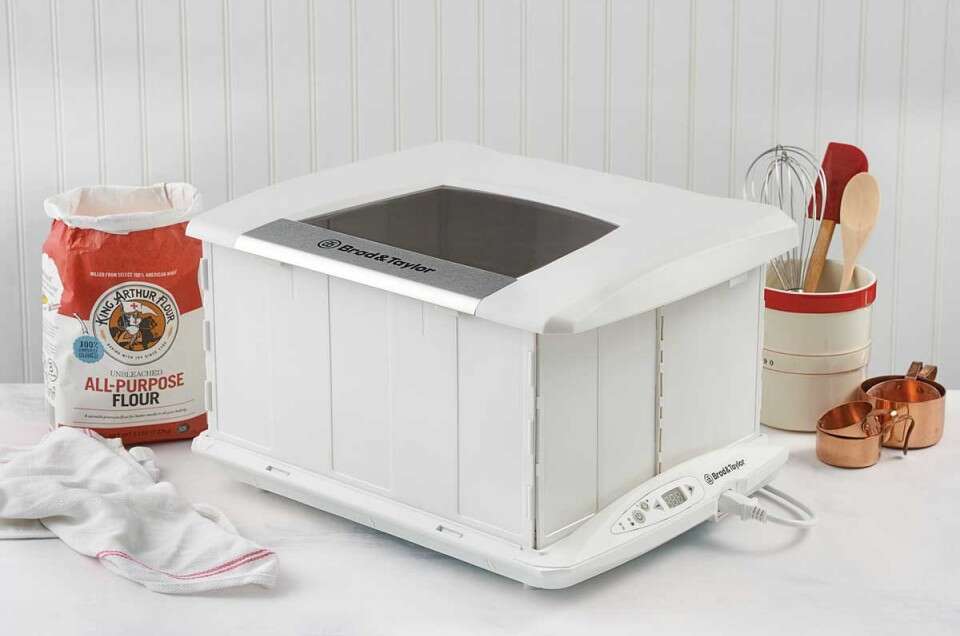Table of Contents
Do you need a bread proofing box?
Do you need an electric proof box? No. But do you WANT an electric proof box? Yes u2013 if you bake bread or rolls, feed sourdough starter, make homemade yogurt, temper chocolate, or simply need a warm and cozy, temperature-controlled place for any kind of food to rest while it’s evolving.
Is a bread proofer worth it?
If you bake bread even semi-regularly, I highly recommend this bread proofer. It makes bread baking easier and will help you bake consistently gorgeous loaves of bread. It folds up flat, making it easier to store, and works just as well as commercial proofers costing 10x as much. Totally worth it
How do you make a bread proofer box?
A bread proofing box is a container in which you place your bread dough after kneading. It takes the guesswork out of the breadmaking process, vastly increasing your chances of producing bread that is light, fluffy, and delicious. Many home bakers might be wondering why you need a bread proofing box.
What can I use if I don’t have a proofing box?
If you bake bread even semi-regularly, I highly recommend this bread proofer. It makes bread baking easier and will help you bake consistently gorgeous loaves of bread. It folds up flat, making it easier to store, and works just as well as commercial proofers costing 10x as much. Totally worth it
Do you need a proofing basket to make bread?
The Best Alternatives for a Proofing Basket
- Linen cloth, or heavy fabric with a raised weave pattern.
- Bowl (wood, bamboo, ceramic, plastic or metal)
- Wicker basket.
- Colander.
- Plastic containers.
- Terracotta gardening pots.
Can I use my oven as a proofing box?
Not necessarily. A banneton (or a proofing basket) lends support to shape the dough during proofing and the spiral shape of the basket imprints that beautiful characteristic pattern on sourdough bread. The banneton is also able to absorb moisture and flour, which helps make the dough less sticky and easy to handle.
Do you need a bread proofer?
If yeasted dough isn’t allowed to proof, the yeast can’t release carbon dioxide, and the gluten won’t stretch to hold the air bubbles. Proofing is an essential part of bread baking and other applications that rely on yeast to create air pockets, such as making croissants.
Are proofing boxes worth it?
Using a proofing box will not only improve your finished product texture and volume but will also cut down on your proofing times (if you use room temperature to proof your dough ) by about 25%.
Do I need a proofer?
A critical component in any bakery, a bakery proofer is specially designed to provide culinary craftsmen with the perfect environment to achieve the best breads, donuts, and croissants possible. Proofing is the final step in making dough before baking, when you allow the dough to rise via the fermentation of yeast.
What does a bread proofer do?
A dough proofer is a warming chamber used in baking that encourages fermentation of dough by yeast through warm temperatures and controlled humidity. It is also called a proofing box, proofing oven, or proofing cabinet.
What can I use instead of a proofing box?
The Best Alternatives for a Proofing Basket
- Linen cloth, or heavy fabric with a raised weave pattern.
- Bowl (wood, bamboo, ceramic, plastic or metal)
- Wicker basket.
- Colander.
- Plastic containers.
- Terracotta gardening pots.
How do you make proofer for bread?
To proof bread in the oven, place a glass baking dish on the bottom rack of the oven and fill it with boiling water.Stash your dough on the middle or top rack and shut the door. The steam and heat from the boiling water will create a warm and steamy environment for the doughu2014exactly what you want for a good rise.
What makes a good proofing box?
A pizza proofing box should be air-tight to avoid a dry crust developing on the surface of the dough during longer leaves. Due to the size, you can also place dough balls further apart, so they don’t touch each other or the edges of the proofing box.
Can I make my own proofing basket?

To proof bread in the oven, place a glass baking dish on the bottom rack of the oven and fill it with boiling water. Stash your dough on the middle or top rack and shut the door. The steam and heat from the boiling water will create a warm and steamy environment for the doughu2014exactly what you want for a good rise.
Is proofing basket necessary?
Not necessarily. A banneton (or a proofing basket) lends support to shape the dough during proofing and the spiral shape of the basket imprints that beautiful characteristic pattern on sourdough bread. The banneton is also able to absorb moisture and flour, which helps make the dough less sticky and easy to handle.
What can I use if I don’t have a proofing basket?
Colander. A metal or plastic colander can be used as a proofing basket alternative in the same way as the ricotta basket below. Smaller is better as it will support your dough better and stop it from spreading out.
Are bread proofing baskets worth it?
Cane baskets also absorb a small amount of moisture during proofing so that the outside of the dough is less sticky. This very thin, slightly drier layer ensures that you can also cut the dough a bit easier (‘scoring’) and that the bread can open nicely during baking. The most commonly used shapes are oval and round.
What happens if you don’t have a banneton?
A colander, with a little help, can serve as an improvised banneton for proofing bread dough. French bakers achieve the symmetrical round loaves of bread known as boules by transferring the dough to shallow, linen-lined woven baskets known as bannetons or brotforms for the last rising step before baking.
Can you use a top oven as a proving drawer?
The Best Alternatives for a Proofing Basket
- Linen cloth, or heavy fabric with a raised weave pattern.
- Bowl (wood, bamboo, ceramic, plastic or metal)
- Wicker basket.
- Colander.
- Plastic containers.
- Terracotta gardening pots.
Can you use the oven drawer to proof bread?
And, for many of us, the oven is the first thing we think of for help. But, can we use the oven to proof dough? Even though an oven should not be turned on with dough inside, it is still an excellent location to proof bread dough.
Do ovens have a proofing setting?
Yes. Place your dough in a bowl and cover with cling film or a clean tea towel as you usually would and then set your warming drawer to 40 degrees (usually shown as a bread symbol on your control knob). Please note your bread will prove in around half the time it takes than when sat at room temperature.
What happens if I don’t proof my bread?
If you don’t let dough rise long enough then the bread will be dense, rubbery and less flavorful. As the yeast ferments, it fills the dough with gas and gives the bread its airy texture. The flavors also come as byproducts of fermentation.
What to do if you dont have a proofer?
Add a bowl of steaming water to the oven, or cover the proofing dough with a bag. Place the mixing bowl or proofing device on the centre shelf. Check the temperature every 5 minutes until you’re confident that it’s not too hot or too cold. The water will need replacing every 45 minutes or so.
Is a proofing box necessary?
Do you need an electric proof box? No. But do you WANT an electric proof box? Yes u2013 if you bake bread or rolls, feed sourdough starter, make homemade yogurt, temper chocolate, or simply need a warm and cozy, temperature-controlled place for any kind of food to rest while it’s evolving.
Do you cover dough in a proofing box?
When proofing dough on the counter it is necessary to cover it to prevent air from drying out the skin on the outer surface of the dough (skinning up). When proofing in the oven we can use a container of warm water instead. This increases humidity in the makeshift proof box, so you don’t need to cover the dough

